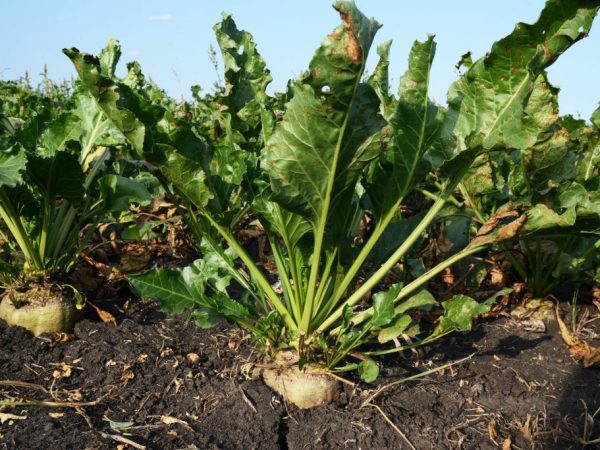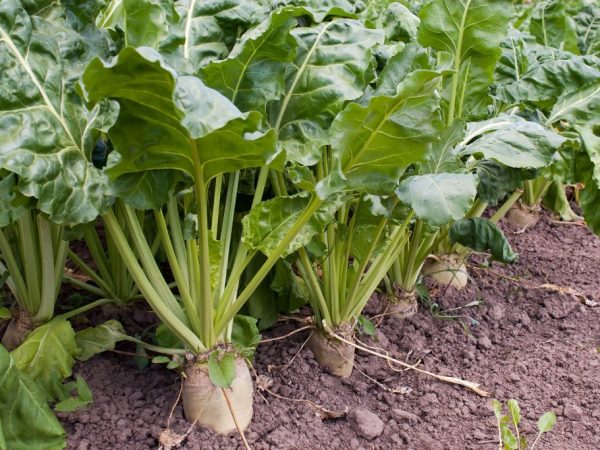Sugar beet harvesting rules 2019
Beets are a vegetable that can be found in every vegetable garden. It has a lot of positive properties, a huge amount of useful substances, it is used in cooking, cosmetology, diets and traditional medicine. In order for vegetables to be preserved for a long time, the harvest of sugar beets in 2019 must be correct. It is held in different regions in a special way.

Sugar beet harvesting rules 2019
Depending on the variety
Much depends on how and in what time frame the sugar beets are removed from the garden:
- with proper harvesting, the fruits retain their taste for a long time;
- the main amount of vitamins that the vegetable has accumulated during the ripening season remains unchanged;
- during storage, the roots will not rot or dry out.
The harvest depends on the weather. It is undesirable to dig up beets in rainy weather: it will still need to be cleaned of adhering soil and dried in the air. If it is wet, it will be much more difficult to do this and the vegetable may begin to rot.
The fruit can be in the ground at an air temperature of 2-3 ° C, it is dug up after harvesting the carrots, from the end of September to the end of October. It is necessary to remove the vegetable from the beds when growths appear on it.
Harvesting depends on the sugar beet variety:
- early varieties: Red Ball, Red Bullet, Elou Bit (almost round and denser structure), Zepo, Boltardi, Madonna (oblong fruits with softer and more watery structure) - ripen in 50-80 days. In the spring, they are planted in early May (1-8), and harvested in the second half of July - early August. These varieties are characterized by a sweet taste and small size. The early varieties are stored less than the late ones (until January - February), so they are used for fresh food: salads, juices, and fresh juices are made from them. Such beets are less suitable for canning;
- late varieties: Single-sprout, Red Cloud, Bikores, Renova, Frona, Citadela, Cylinder. The planting of this type of beet is carried out later (May 9-17), and the harvest may last until the end of October. Late varieties are more resistant to weather changes, diseases and pests. Beets have a firm structure and thicker rind. If stored properly, fruits can retain all their beneficial properties for up to 9 months. Late varieties have a cylindrical oblong shape, and their color is darker than that of earlier varieties. The sugar concentration in them is 8-12% higher.
You need to dig out large-sized root crops 10-15 days earlier than small ones. The latter can remain in the ground until frost.
Lunar calendar
The lunar calendar, based on data on the position and movement of the night star, provides gardeners with useful information about planting and harvesting vegetables, fruits, bushes and trees. It lists the exact dates for harvesting beets in 2019. It is recommended to dig up root crops during the waning moon, and plant them on the growing moon.
You cannot harvest on a full moon or new moon.
The terms of harvesting sugar beets according to the lunar calendar will be useful to you if you want to keep your harvest as long as possible:
- September. The 14th, 16th, 23-25th, 28th, 29th will be favorable for collection;
- October.This month, you can harvest beets on the 3rd-6th, 13th, 15th-19th, 22nd-25th, 27th;
- November. In good weather, late winter varieties are harvested at the beginning of the month. It is better to do this on 2-3 and 6-7 numbers, but it is important to take into account the weather.
Do not dig up beets when the moon is in the watermark phase: such a crop will not last long.
Depending on the region

Cleaning times depend on weather conditions
No matter how accurate the lunar calendar for 2019 is, it is necessary to take into account the region in which the sugar beet grows:
- in the middle lane (Moscow region, Nizhny Novgorod, Oryol, Bryansk regions), beets are dug up from mid-September or early October. Check the readiness of the vegetable for harvesting, because in the last month of growth, it actively accumulates sugar and nutrients;
- in the southern regions (Kursk, Lipetsk, Belgorod regions), the vegetable is harvested from early September (early and mid-early varieties) to early November (late winter varieties). In these areas, the fruits are sometimes sown for the winter (it is warm here, and the seeds can be safely in the ground). You just need to monitor the appearance of the vegetable - it can be removed if its lower leaves turn yellow and dry, growths have appeared on the root crop itself, and the mass of fruits has reached the specified by the manufacturer;
- in the northern regions (Bashkiria), only early and mid-early varieties are grown, which ripen in 80-100 days. Under these conditions, gardeners recommend planting root crops from seedlings. This makes it more resistant to cold weather. Late varieties in this climate simply do not have time to ripen, because winter starts earlier than in the southern regions. The vegetable will not have time to gain juice and sweets and will be poorly stored in winter.
Beet storage methods
To preserve the maximum amount of nutrients in sugar beets, they need to be harvested at the right time and kept in suitable conditions. Many people believe that this vegetable is not afraid of cold weather, and begin to harvest it after the frost. As a result, the peel and upper tissues freeze, and the vegetable begins to rot.
The best harvest period is the second half of September - the first half of October. The process can be extended if the weather permits. But it is important to take into account that if the root crop is overexposed in the ground, its taste characteristics and keeping quality will deteriorate.
Having dug up a vegetable, you need to clearly follow the rules for its storage:
- before the date of digging, do not water the vegetable for 10-15 days. This reduces the likelihood of decay and the root crop is easier to clean from the soil;
- the fruits are given time to "ventilate" (about 3-5 hours), so that the remnants of the earth dry out;
- the ideal temperature for storing root crops is 0-2 ° C. Humidity should not be less than 80%;
- it is better to store the harvested fruits in the basement. Straw is placed on the bottom of the container in which they will lie, then the root vegetables are covered with meen powder (3 kg per 100 kg of fruits) and folded in the shape of a pyramid to create optimal air circulation between the vegetables. Sprinkle the fruit with wet sand to retain moisture;
- if there is no basement, you can store the crop in specially prepared piles, dug holes in the ground. The depth of the pile depends on the number of roots. Put boards at the bottom, in the middle of the pit build a "chimney" from bunches of dry straw (so that the vegetables "breathe") and lay the fruits around it. The layer of earth above them should be at least 50 cm. If they are stored in a pile all winter, then at the end of November the layer of earth should be increased to 1 m. This storage method is good only for southern regions with non-severe winters.
Sugar beet is not only a storehouse of vitamins, but also an excellent antidepressant. If fresh juice is consumed every day, the level of stress resistance increases by 10%, and fatigue decreases by 18%. The longer this vegetable is stored in the house, the healthier its residents will be.

